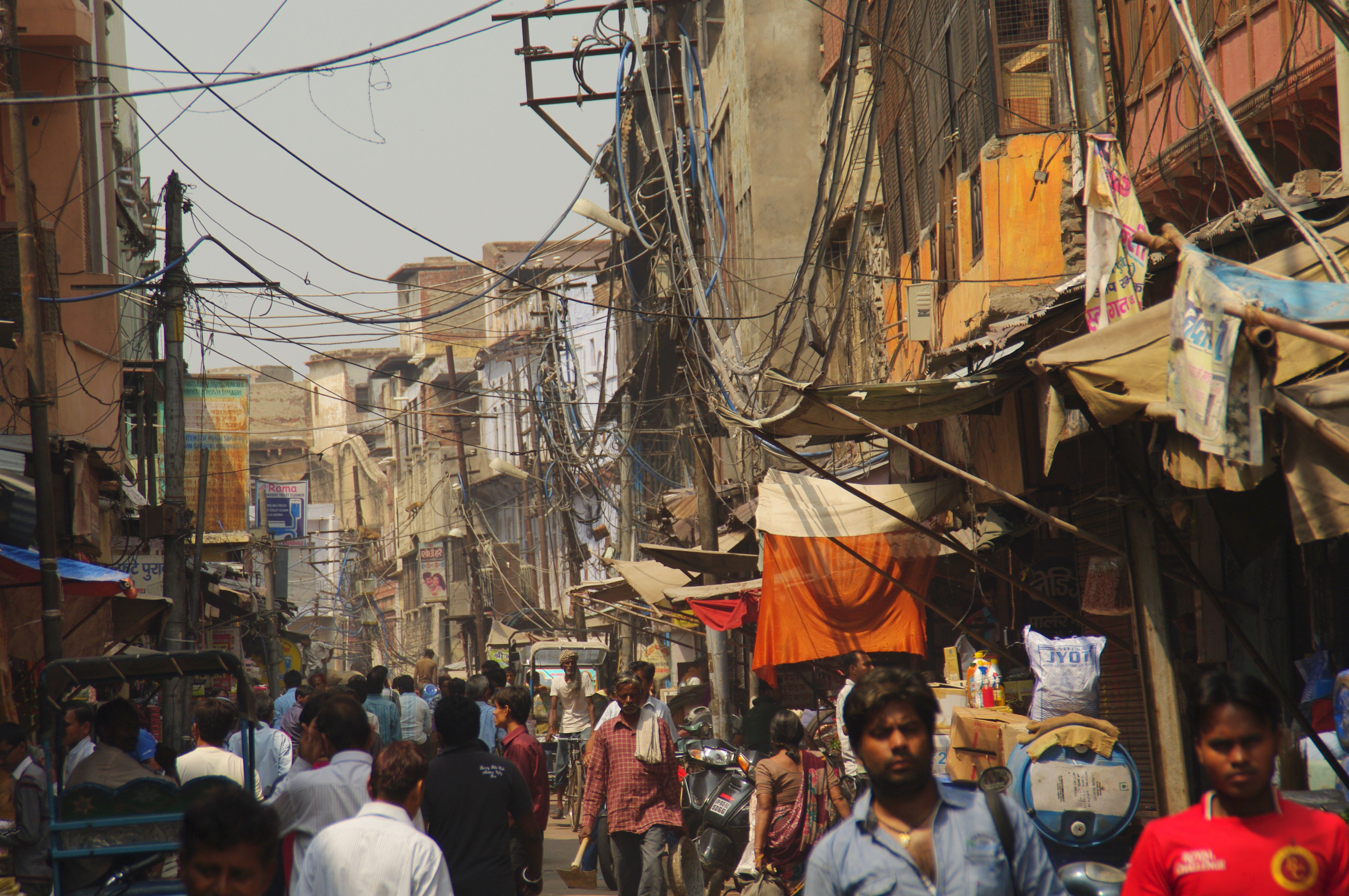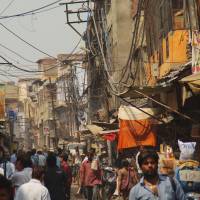Incredible India! is the Indian government's marketing slogan to attract tourism. And I agree. India is truly incredible in countless ways, both captivating and heartbreaking.
Ten days ago I returned from my annual study tour with university students to India and my mind continues to sort memories, questions and concerns.
Meeting families in the slums of Chennai, visiting Japanese companies and diplomats, staying at rural development projects and getting to know Indian law students through study, laughter and dance, each year my students are challenged by India to get their heads around the unfathomable.
India has almost 10 times the population of Japan (1.23 billion vs. 127 million) in a country about 10 times larger (3.3 million sq. km vs. 377,915 sq. km), but what tends to overwhelm my students is India's sheer diversity in all things.
It could be argued that Japan is the antithesis of India. It is clean, efficient, controlled, homogeneous, relatively quiet and predictable. One Indian friend calls Japan sterile.
India, on the other hand, is chaotic. People walk in the street, music blares from temples and shops, and signs and posters are everywhere, as are smells and garbage. Auto-rickshaw can be seen driving the wrong direction and the din from horns can be nearly unbearable. More often than not, traffic rules are the victim of opportunity and vehicles find their own frenetic flow.
"Diversity" is so often used in speaking of India that it has become a cliche. Still, it's hard to come up with a more appropriate word. Diversity is the source of India's vitality and beauty; it is also the cause of debilitating social and environmental problems.
Above and below the surface, India bubbles with all varieties of race, religion, philosophy, language, culture, politics, socioeconomic and caste divides, and myriad combinations of all of these. Geographically, too, India offers everything from sandy beaches and dense forests to deserts and towering peaks.
Its cities in particular seem to pulse with youthful vitality, which is not surprising, since 18 percent of the population is between the ages of 15 and 24. Just 5.7 percent of Indians are over 65.
In contrast, almost 25 percent of Japanese are over 65, while only about 10 percent are between 15 and 24.
India is truly incredible. But new visitors to India's cities probably won't notice the captivating diversity at first, if at all. More likely they will be overwhelmed by the garbage, rivers that are often putrid with sewage and air that is yellow with dust and vehicle emissions.
The sad truth is that India has a bulging portfolio of serious, and growing, environmental problems.
As one Indian blog states, "Environmental issues in India are huge. Whether it's the rapidly dropping water tables, mass deforestation, land degradation or river contamination, India has it all and on a massive scale."
The Ganges, or Ganga, is a good example of that massive scale.
In an article titled "Can we save Ganga?" published Aug. 31 on the website Down to Earth (www.downtoearth.org.in), Soma Basu and Sushmita Sengupta share the results of their research and a trip down the most polluted stretch of Ganga.
According to a 2013 report from India's Central Pollution Control Board, "2,723 million liters per day (mld) of domestic sewage is discharged by cities located along the river. But even this may be a gross underestimate," they explain.
"Cities have grown without planning and investment, so most do not have underground drainage networks. Waste is generated but not conveyed to treatment plants. There is no power to run treatment plants; bankrupt municipalities and water utilities have no money to pay for operations.
"Over and above this, 764 industrial units along the main stretch of the river and its tributaries discharge 500 mld of mostly toxic waste. All efforts to rein in this pollution have failed," the authors note.
Any tourist who sits beside the Ganges long enough will see locals using the river as both bath and toilet and note the steady stream of waste flowing past, including the remnants of funerals and rituals, as well as dead and bloated animals, all swirling by in the tug of the river's muddy waters.
Of course, there are far greater costs than shocked tourists. In monetary terms, environmental degradation costs India $80 billion per year, equivalent to 5.7 percent of its economy, according to a March article on the World Bank's website.
However, the bank also noted, "low-emission, resource-efficient greening of the economy should be possible at a very low cost in terms of GDP growth."
The problem is not a lack of ideas. Indians most often cite greed, graft, overlapping and conflicting laws and political inertia as obstacles to change.
Traveling there while India's Prime Minister Narendra Modi was in Japan, I was struck by how much Indians like and respect Japan. Everywhere we went, people of all ages were delighted to meet Japanese students, to shake hands and take pictures together.
Modi clearly prefers to share business and pleasure with Abe rather than with China's President Xi Jinping, who arrived in India as we were leaving, but doing business in India remains daunting for anyone who insists on predictability.
Nevertheless, if Japan is willing to work closely and over the long term with India to modernize infrastructure and rationalize laws, Prime Minister Shinzo Abe would be hard pressed to find a more friendly and welcoming ally elsewhere in Asia.
Of course, money is key. When Abe met Modi he promised to provide $35 billion worth of investments in India over the next five years. Xi offered $20 billion. Various sectors of the economy have been mentioned, but here's my list: waste management, water and sanitation, clean energy, river cleanup and public transportation.
Unfortunately, $35 billion won't go far. More importantly, Modi and Abe also agreed to increase the number of exchange students between the two countries, and that gets my wholehearted support.
Abe needs to generate demand in India and Modi needs to show Indians that he is prioritizing modernization, all of which will take time. In contrast, student exchanges are relatively inexpensive, they can begin almost immediately and their benefits are wide-ranging, including long-term research, tourism and business.
Over the years, people on both sides will forget what was bought and sold. Exchanges of young people, however, will create friendships that will continue to bond the two nations for decades to come.
Stephen Hesse is a professor in the Law Faculty of Chuo University and associate director of Chuo International Center. He can be reached at [email protected].





















With your current subscription plan you can comment on stories. However, before writing your first comment, please create a display name in the Profile section of your subscriber account page.